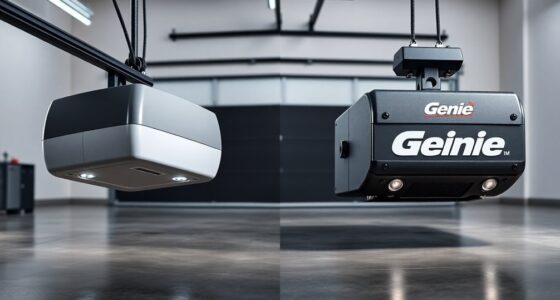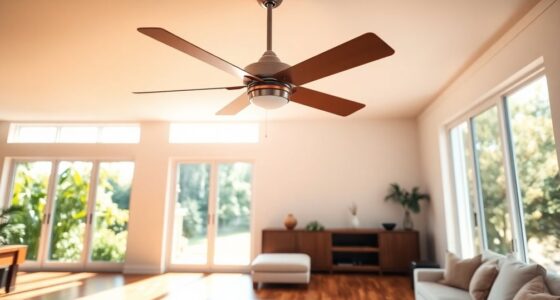Turning your house into a smart home is easy with seven simple steps. Start by defining your goals, like improving energy efficiency or adding security. Prioritize your needs, focusing on the most important features first. Next, choose a smart home platform that supports your devices. Connect compatible gadgets and set them up with integrated apps. Configure automation for convenience, like scheduled lighting and temperature control. Don't forget to monitor your system with security sensors and cameras for peace of mind. Lastly, maintain and update your devices for optimal performance. Keep going, and you'll discover even more tips for a smarter home!
Key Takeaways
- Define your smart home goals by identifying priorities like energy efficiency, security, and convenience to tailor your setup accordingly.
- Choose a compatible smart home platform that supports various devices and voice assistants for seamless integration and control.
- Prioritize essential features, evaluate your budget, and ensure device compatibility to maximize your investment and user experience.
- Connect devices using a reliable smart home controller and ensure a strong Wi-Fi network for optimal communication between devices.
- Regularly monitor and maintain your system by scheduling updates, checking battery life, and ensuring sensor accuracy for consistent performance.
Define Your Smart Home Goals
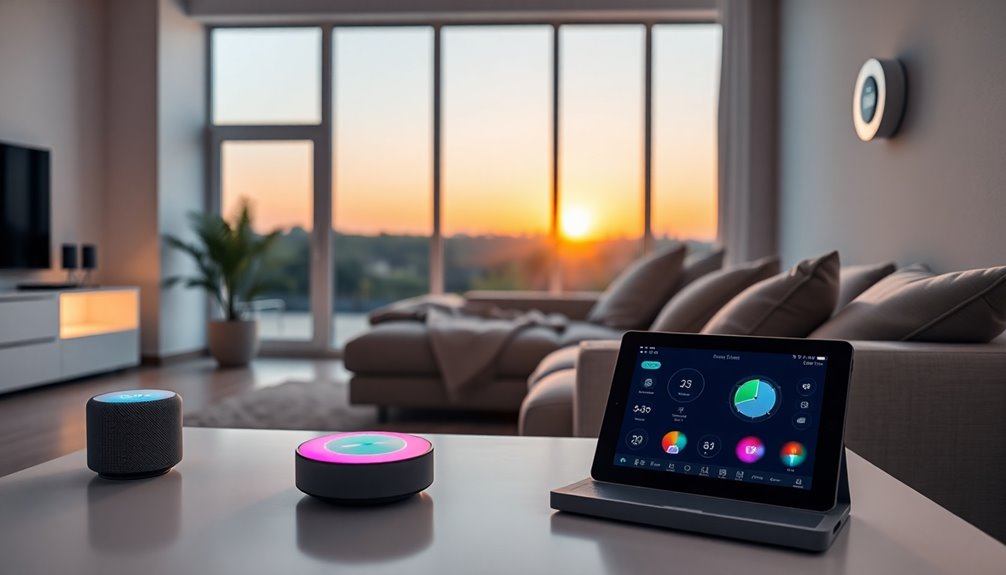
When you begin your journey to create a smart home, it's essential to define your goals clearly. Start by identifying functional goals like energy efficiency, safety, comfort, entertainment, and health monitoring.
Think about how you'd like to automate tasks—perhaps adjusting lighting or temperature for convenience. Next, consider your lifestyle needs; remote control and customization can enhance your experience. Additionally, incorporating health monitoring devices can provide valuable insights into your well-being.
Assess technological requirements, ensuring device compatibility and data security. Don't forget to evaluate your budget, keeping in mind both initial investments and ongoing expenses.
Lastly, set time-bound objectives to track progress and adapt as technology evolves. By clarifying these goals, you'll create a smart home that truly fits your needs and enhances your daily life.
Prioritize Your Needs
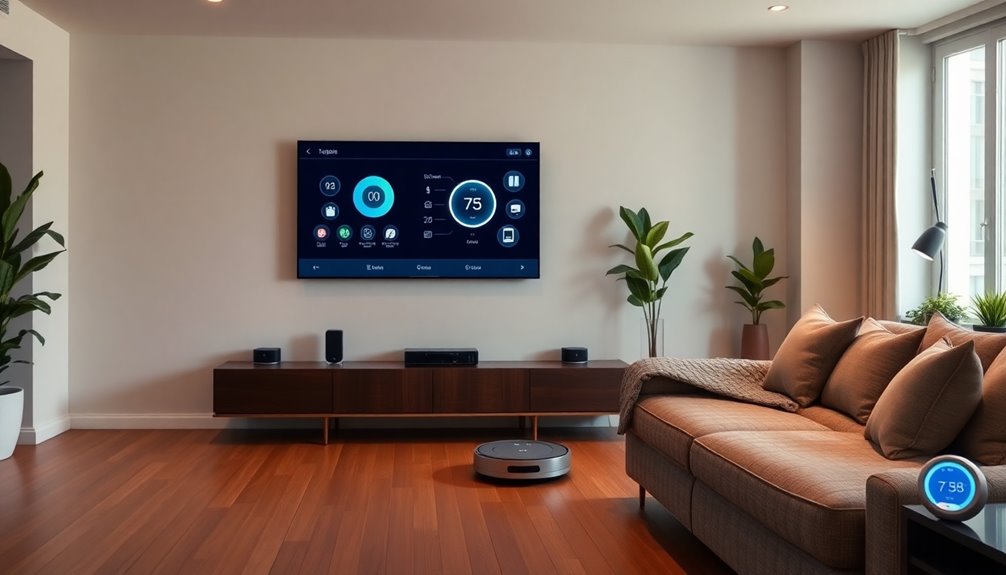
How do you determine which smart home features matter most to you? Start by identifying key areas like security, energy efficiency, entertainment, convenience, and health.
Rank these based on your priorities—security systems should top the list, while convenience and entertainment can follow.
Next, consider your budget. Evaluate the initial costs and ongoing expenses, looking for solutions that provide long-term value. Smart home technology enables you to integrate devices that can enhance your home experience while being mindful of costs. Additionally, setting a clear savings goal can help you manage your budget effectively.
Ensure that the devices you choose are compatible with your current technology and can scale as your needs grow.
User experience matters too; opt for devices that are easy to use and offer voice control.
Lastly, don't overlook privacy and security—choose devices that protect your data while meeting your smart home needs efficiently.
Choose a Smart Home Platform
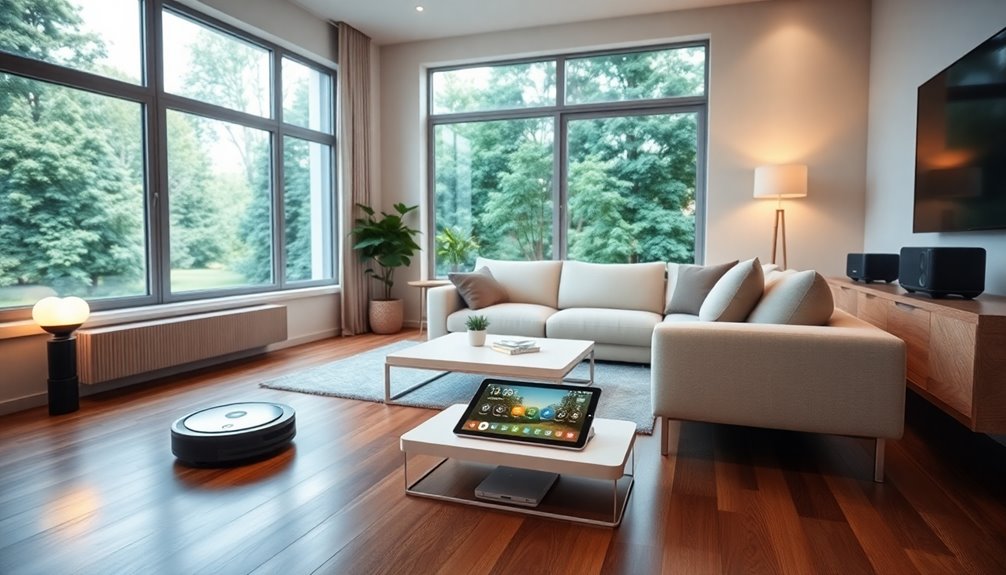
Which smart home platform will best suit your needs? Start by considering compatibility and integration.
Look for platforms that support a wide range of devices like lights, thermostats, and security systems. Ensure it works with voice assistants like Alexa, Google Assistant, or Apple HomeKit, and check for Matter support for future-proofing. Additionally, consider the importance of communication standards as they can dictate the range of devices that can be seamlessly connected.
Next, evaluate automation capabilities. Advanced features such as customizable routines, scheduling, and event-based triggers can enhance your experience.
User experience matters too. A user-friendly interface and remote access are essential for ease of use.
Finally, factor in cost and value. Assess the prices for the hub and devices, any subscription fees, and overall value to make an informed decision.
Connect Devices
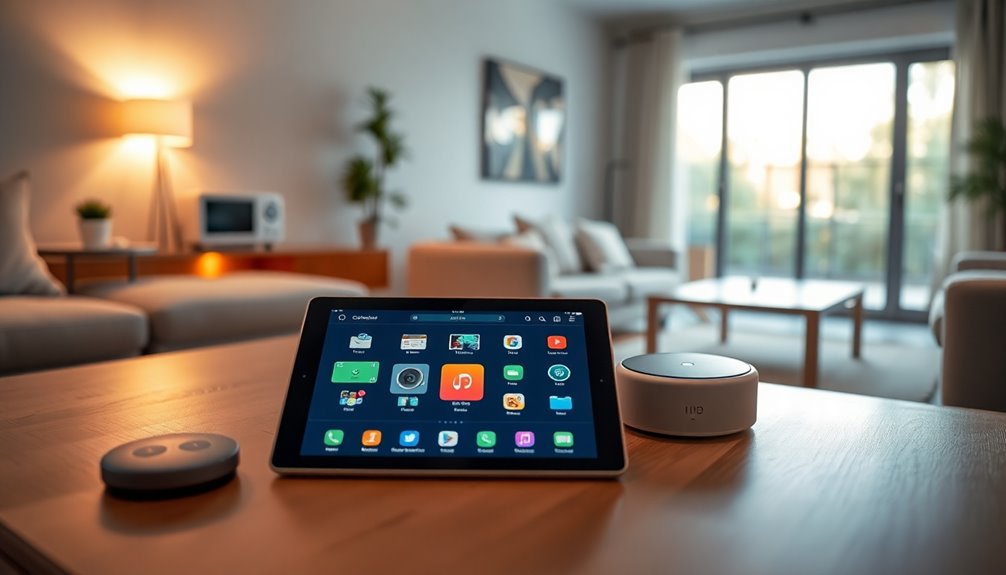
As you embark on connecting devices in your smart home, understanding compatibility and interoperability is crucial.
First, check that your devices use the same base technology, like Z-Wave or Zigbee, to ensure they work together seamlessly. For devices from different manufacturers, look for those that support open communication protocols like MQTT.
Choose a smart home controller that supports multiple protocols for broader compatibility. Don't forget to download the companion apps for each device, put them in pairing mode, and connect them to your Wi-Fi.
Once connected, integrate them with your chosen ecosystem app, like Google Home or Alexa, to control everything effortlessly. Reliable Wi-Fi network is essential for device communication and can significantly enhance your smart home setup.
With the right setup, your devices will function harmoniously, enhancing your smart home experience.
Configure Automation and Schedules
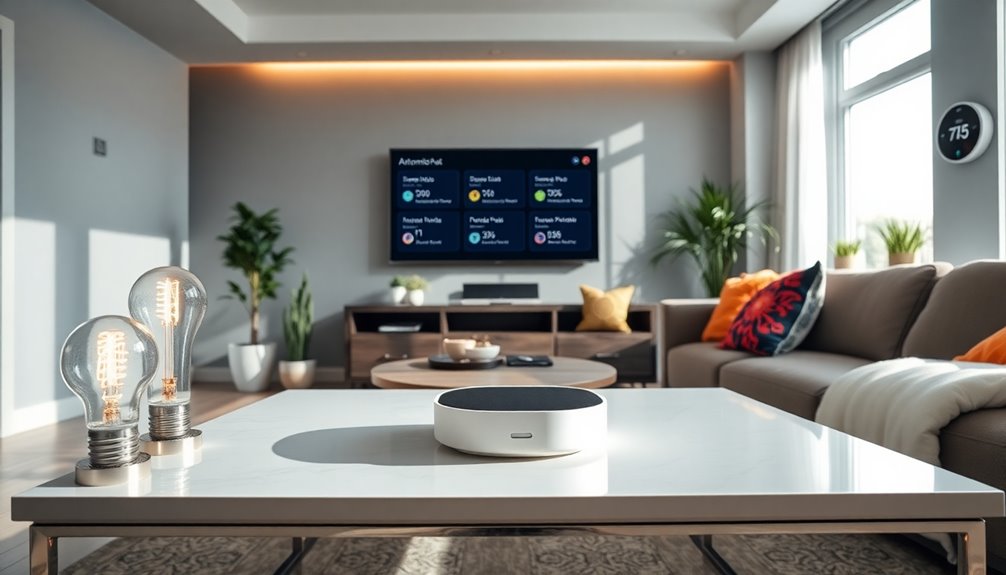
To create a truly smart home, configuring automation and schedules is essential, allowing your devices to work together seamlessly.
Start by identifying which devices will be automated and set priorities for their functions. Define specific scenarios, like turning lights on or adjusting the thermostat, and consider the timing for these actions.
Choose a compatible hub and select automation software that supports your devices. Set up routines by programming schedules and defining triggers based on sensor data. This integration of smart devices will enhance the overall efficiency of your home automation system.
Make sure to test each scenario thoroughly. Regularly check device performance and adjust settings based on your usage patterns.
Lastly, keep your device firmware updated for optimal functionality and security. Embrace the convenience of home automation!
Monitor Your Home
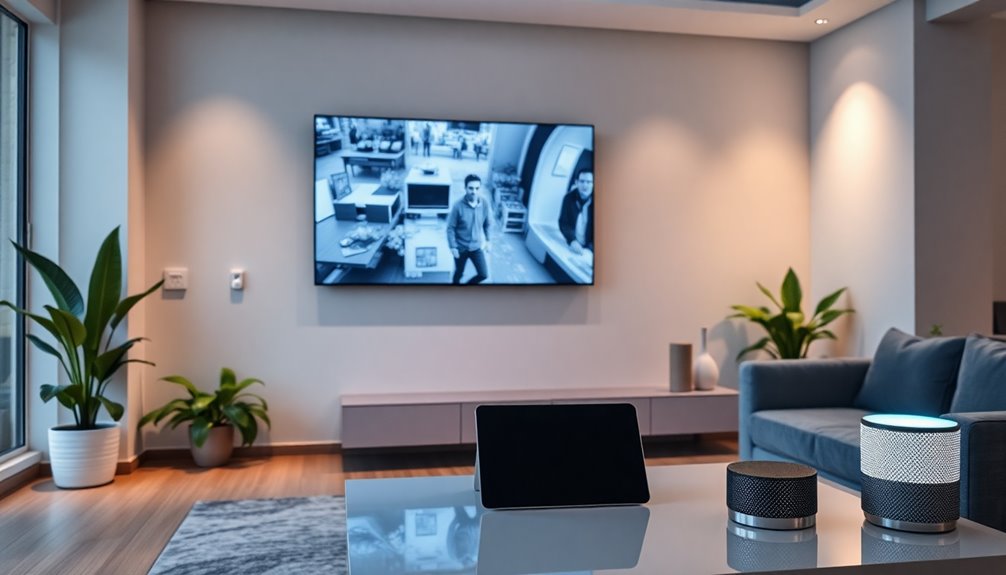
How can you ensure your home is safe and secure in today's digital age? Start by choosing a smart security system that integrates with various devices and offers features like motion detection and alerts.
Equip your home with sensors and HD cameras, including night vision options, to cover all entry points. Make sure your system can work with third-party devices, like smart locks and lights for enhanced security. Smart platform integration is essential for communication with various devices, so ensure your chosen system supports it. Additionally, consider the average cost of home security systems, as this will influence your budget and options.
Research monitoring plans, whether you prefer professional assistance or DIY options. Look for redundancy in monitoring centers and advanced alert protocols.
With smart cameras and motion sensors, you'll receive real-time notifications and custom alerts, ensuring you're always in the know about your home's security.
Maintain and Update Your System
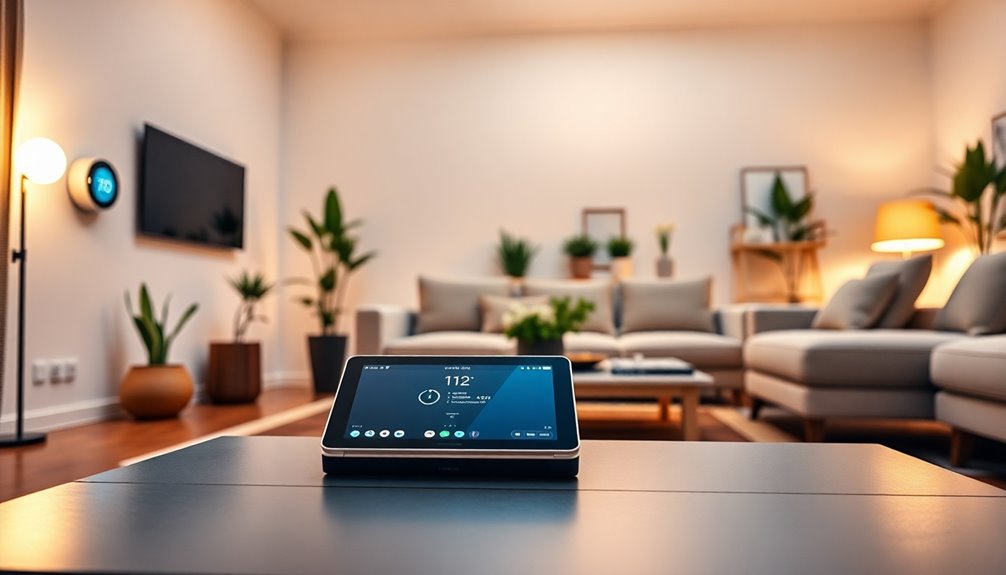
Maintaining and updating your smart home system is crucial for ensuring its security and efficiency. Set up automatic firmware updates for your devices to keep them secure and regularly check for manual updates to fix bugs. Regularly performing routine cleaning of devices can also help prevent major issues that may arise from accumulated dust and debris.
Always verify compatibility before installing new updates to avoid connectivity issues. Use strong passwords and WPA3 encryption for your network, isolating smart devices to enhance security. Schedule regular battery checks and replace them promptly to prevent interruptions. Clean your sensors frequently to maintain accuracy and test them to ensure proper functionality.
Frequently Asked Questions
What Is the Average Cost to Set up a Smart Home?
The average cost to set up a smart home is around $903, but it can range from as low as $205 to as high as $1,666.
If you're considering luxury options, expect to spend anywhere from $10,000 to $150,000.
DIY installations might cost between $100 and $3,000, while professional setups can reach $150,000 depending on complexity.
Keep in mind that ongoing maintenance and subscription fees can add to your total expenses.
Are Smart Home Devices Energy-Efficient?
Imagine your home as a wise old owl, effortlessly saving energy while keeping you comfortable.
Smart home devices embody this wisdom, offering remarkable energy efficiency. Smart thermostats adjust temperatures based on your movements, while smart lighting uses 90% less energy than traditional bulbs.
Appliances optimize their energy use, saving you up to 15%. Together, these devices create a harmonious ecosystem, ensuring you're not just living smartly, but also sustainably.
Can I Integrate Existing Devices Into a Smart Home System?
Yes, you can integrate existing devices into a smart home system.
Start by checking the compatibility of your devices with protocols like Wi-Fi, Zigbee, or Bluetooth. Research whether your chosen hub supports these protocols.
Make a list of devices you want to integrate and plan their placement for optimal connectivity.
Follow the manufacturer's instructions for installation and configuration, and always test the devices to ensure everything functions smoothly after integration.
How Do I Ensure My Smart Home Is Secure?
To ensure your smart home is secure, start by securing your network with strong, unique passwords and enabling WPA3 encryption.
Regularly update firmware on all devices and change default settings. Protect your router by setting up a guest network and using a VPN.
Enable multi-factor authentication for an added layer of security, and perform regular audits to identify vulnerabilities.
Always monitor usage patterns for any unauthorized access to keep everything safe.
What Happens if My Internet Goes Down?
Imagine your favorite concert suddenly going silent because the power cuts out—your smart home can feel just as lost without internet.
When your connection drops, smart lights may not turn on, and your thermostat won't adjust. Security systems might falter, and streaming services will be off-limits.
Thankfully, you can still rely on manual controls and traditional appliances. Preparing backup solutions ensures your home stays functional, even when technology lets you down.
Conclusion
Now that you've navigated the journey to a smarter sanctuary, enjoy the seamless synergy of your smart home. With gadgets gracefully working together and cozy comforts at your fingertips, life becomes a breeze. Keep tweaking and tuning your tech to ensure everything flows flawlessly. Embrace the exciting evolution of your living space, where convenience and creativity collide, crafting a cozy haven that's tailored just for you. Welcome to your wonderful world of smart living!


